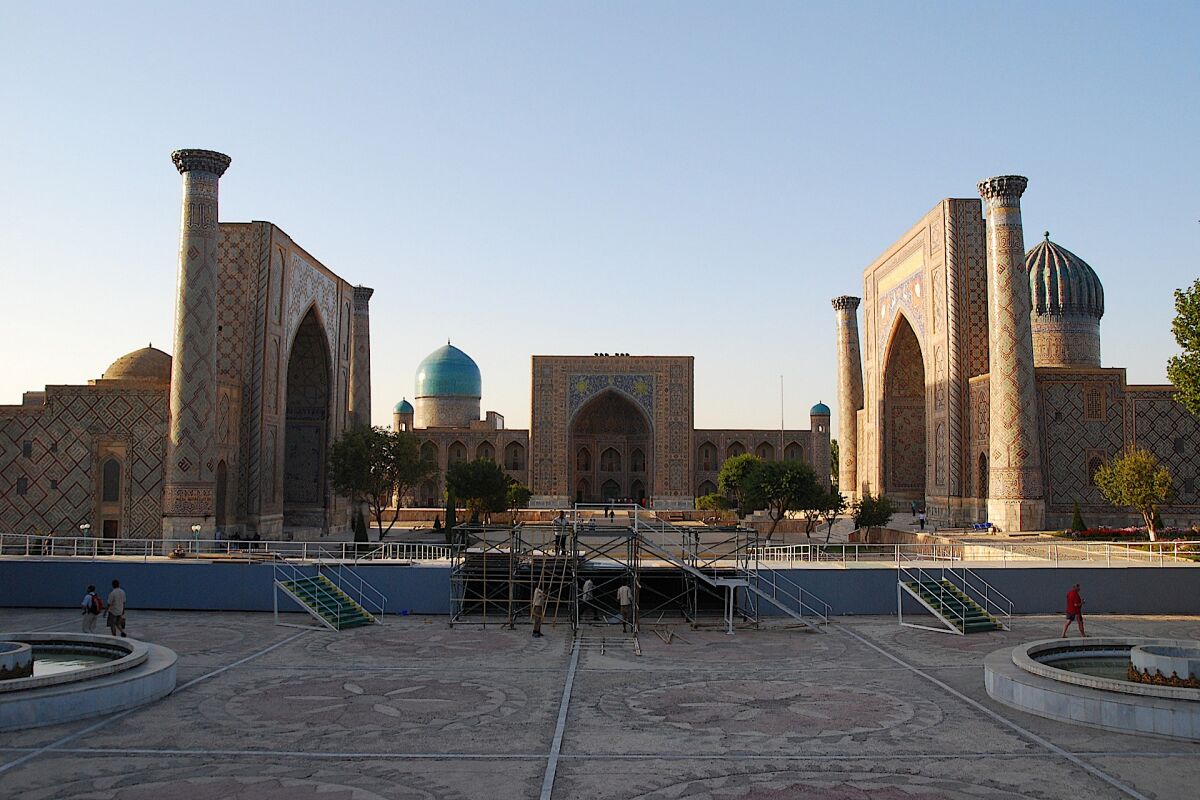Samarkand - Registan Square
Registan Square is the meaning of ” Sand court”. Registan Square is an administrative, commercial and craft centre of the city in the Orient. Registan Square in Samarkand is one of the outstanding examples of urban planning in Central Asia, which was built between XV – XVII centuries and consists of three Koran schools – Ulugbek Madrasah (1417-1420), Sher-Dor Madrasah (1619-1636) and Tilla-Kari Madrasah (1647-1660). With Registan Square you can “turn the pages” of Samarkand several thousand years of history. The entire history of the medieval town is also reflected here. On the north-eastern side there is the Chorsu market place, built in the XVIII century.

It is said that all roads go to Rome. There is no doubt that all roads lead from Samarkand to Registan. Six radial roads converged to the square, at the crossing of which the Telpak-Furushon bazaar was built at the beginning of the XVth century. On the northern side of the square Ulugbek built a caravanserai with his name. All streets bordering it were filled with small workshops and benches. Four years after the caravansary was built, Ulugbek built a khanaka on the site where Sher-Dor Medresse now stands. Therefore the market place had to be dismantled. Everyone who enters this square is in a special mood: it seems that centuries later the cries of the craftsmen, the murmur of the Oriental bazaar, the voices of the heralds announcing the decrees of the rulers come here… In the time of Amir Timur, Registan was the most important market place of the city. During the reign of Mirzo Ulugbek it takes on a festive and official character. However, Registan has not lost its importance as a centre of public life, trade and craft activities. Outstanding achievements of the artistic thinking of the XV century are architectural ensembles. The most important urban planning task at present is the architectural design of Registan Square.
